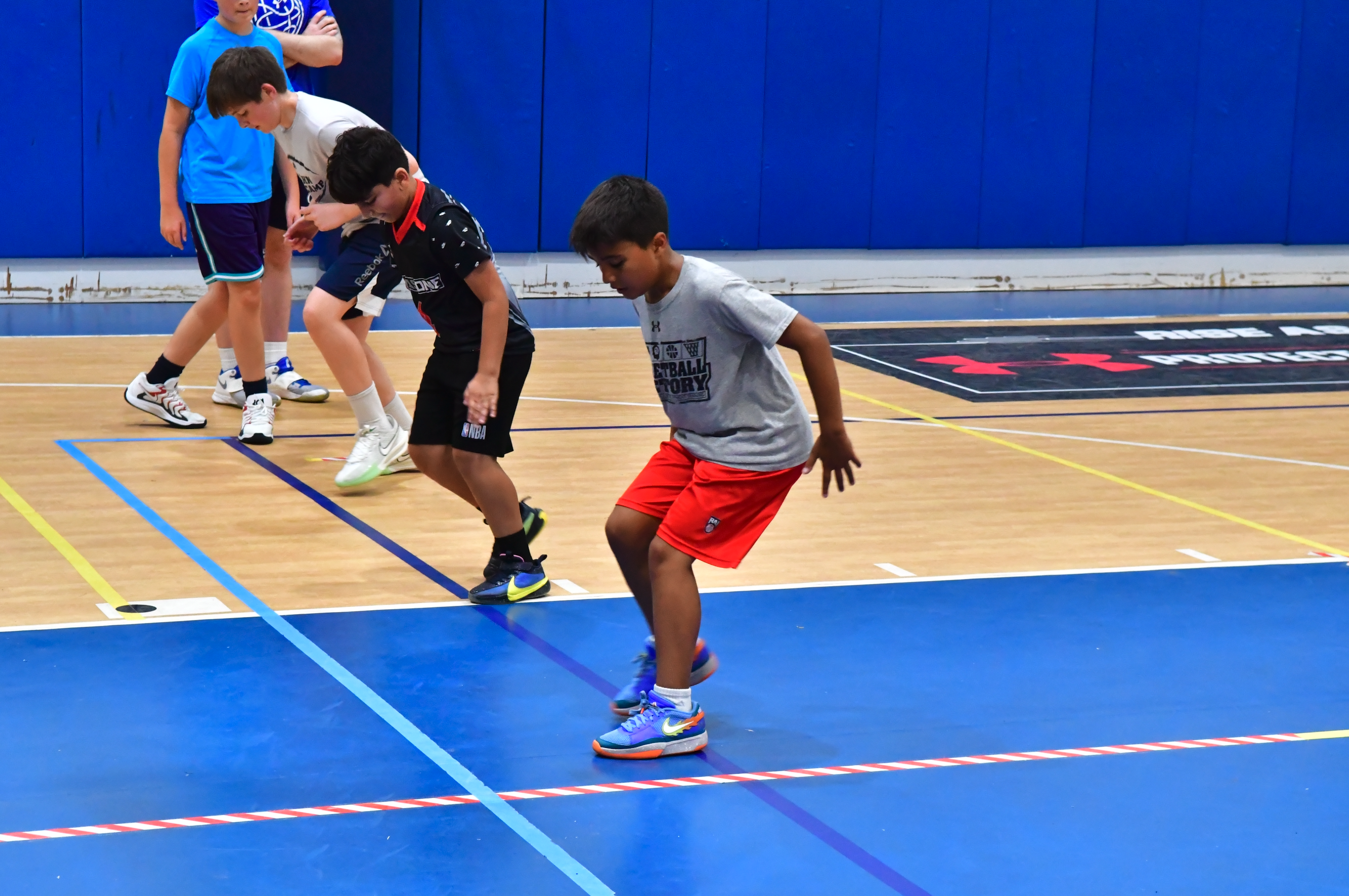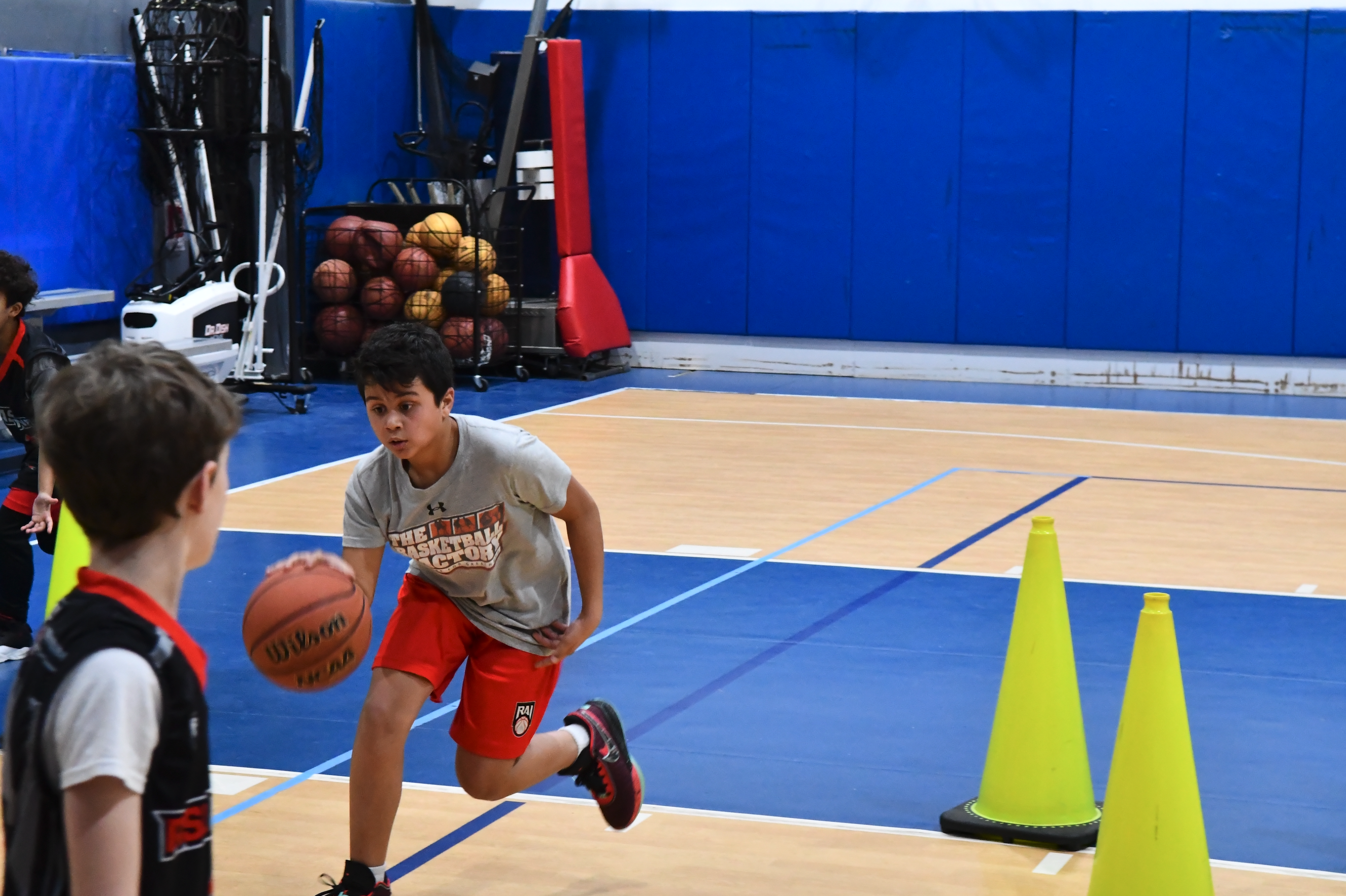Playing Basketball is more than just a game; it’s a thrilling team sport! Typically played outdoors on concrete or indoors on a wooden court . Each game features two teams of up to five players, emphasizing the necessity for teamwork and strategy. Typically, teams can roster up to fifteen players, but only five occupy the court at any one time. This setup fosters a camaraderie among teammates while also demanding individual excellence.
The dimensions of a standard basketball court are fundamental to understanding the game. Measuring 94 feet long and 50 feet wide, the court boasts defined areas vital for strategy and play. The center circle facilitates the game’s opening jump ball, setting the stage for competition. At each end, baskets are mounted 10 feet high, demanding precision from players striving to score. The three-point arc creates exciting opportunities for high-scoring plays, offering three points for baskets made from beyond the arc, while shots taken closer to the basket earn two points.
In the game, player positions play crucial roles. Typically, every team includes two forwards, two guards, and one center. Each position has distinct responsibilities; for instance, forwards are often tasked with scoring and rebounding, while guards focus on ball handling and facilitating plays. Team dynamics become vividly apparent as the game unfolds, with each player required to adhere to both individual roles and collective strategies.
Basketball is a game of intelligence and skill, not just athleticism.
As players navigate the court, they must remember the basic rules, including dribbling the ball with one hand while moving, failing to do so leads to turnovers. The nuances of the game, such as avoiding traveling and key violations like goal-tending or charging, also play a significant part in the fast-paced environment of basketball. For example, players must be mindful of the three-second rule within the key and maintain control to avoid penalties.
Ultimately, the primary goal remains straightforward: to outscore the opponent. The sport’s exhilarating pace requires players to remain alert and dynamic, adapting to ever-changing scenarios on the court that dictate the flow of the game.
Mastering the Basic Rules of Play
Understanding the fundamental rules of basketball is crucial for every novice player stepping onto the court. These essential rules not only uphold the integrity of the game but also pave the way for more strategic gameplay. Picture this: a player picks up a basketball for the first time, feeling the weight and grip of it. Immediately, they are thrown into the fascinating world of dribbles, passes, and, yes, rules that dictate how to play fairly and effectively.
Every game starts with a structured set of essentials. In basketball, each team is limited to a maximum of five players on the court, which establishes a framework for both teamwork and competition. Regularly, players need to be aware of their surroundings and act quickly, knowing that the clock is always ticking. For example, teams have a scant 24 seconds to attempt a shot once they possess the ball, compelling players to be decisive and engaged at all times.
Among the common fouls new players will come across are violations like double dribbling and traveling. These inadvertent mistakes are not just embarrassing; they can lead to lost possessions. Imagine a player dribbling the ball, only to pick it up and start again—this is double dribbling, a no-no that turns the ball over to the opposing team. Staying clear of such blunders is essential for any aspiring athlete.
Beyond these basics, understanding strategic play can make the difference between a good player and a great one. For instance, if a player remains in the key for more than three seconds, it results in a turnover—a crucial rule that emphasizes both movement and teamwork. Recognizing the importance of these regulations allows players to avoid violations and make smarter moves that could lead their team to victory. So, whether it’s learning to shoot from the three-point arc or understanding the dynamics of free throws, every rule learned is a step closer to mastering the game of basketball.

Developing Skills: Dribbling and Shooting Techniques
To excel in basketball, mastering the dual arts of dribbling and shooting is essential. Both serve as fundamental cornerstones for players looking to enhance their performance on the court. Let’s dive into effective dribbling techniques, shooting fundamentals for accuracy, and practical tips for developing a personal practice routine.
Effective Dribbling Techniques
Dribbling is not just about bouncing the ball aimlessly; it’s a skill that allows players to maneuver around defenders while maintaining control. Players should focus on a mix of one-handed dribbles and cross-dribbles to keep opponents guessing. Practicing these techniques can significantly bolster a player’s ability to navigate tight spaces on the court.
- One-handed Dribbles: This technique enhances ball control and helps players react quickly during high-pressure situations.
- Cross-Dribbles: These are effective in confusing defenders, changing the ball from one hand to another as players move.
As the familiar saying goes,
“Practice makes perfect, but perfect practice makes champions.”
This highlights the importance of deliberate training over sheer volume.
Shooting Fundamentals for Accuracy
When it comes to shooting, maintaining proper form and a consistent follow-through can drastically influence a player’s scoring effectiveness — studies suggest that a consistent shooting form can increase scoring effectiveness by up to 10%. Players should frequently practice shots from various distances, including both inside and outside the three-point arc to build confidence and adaptability.
- Free Throws: People often underestimate the art of shooting free throws, but mastering this skill can break ties in crucial game moments.
- Three-Point Shots: Shooting from beyond the arc requires precision and practice, as they can significantly impact a team’s overall score.
Tips for Developing a Personal Practice Routine
To foster improvement in both dribbling and shooting, players should develop a structured practice routine. Dedicate specific times each week to focus on drills aimed at enhancing these skills. A balanced approach that incorporates both elements ensures comprehensive skill development.
- Time Management: Set aside dedicated practice time allowing for consistent improvement.
- Variety of Drills: Different drills keep routines fresh and engaging while targeting different skill areas.
In conclusion, building basketball skills takes not only effort but also smart practice routines. By integrating effective dribbling and shooting techniques into their practice, players can elevate their game and contribute significantly to their team’s success.

Scoring Points: The Objective of the Game
In the exhilarating sport of basketball, scoring points serves as the primary objective, driving each team’s strategy throughout the game. Understanding the various scoring methods is crucial for players and fans alike. Points can be accumulated in three distinct ways: baskets scored from outside the three-point arc, baskets made inside the arc, and free throws awarded after fouls. This dynamic scoring structure adds layers of complexity and excitement to the game.
The three-pointer is a crowd-pleaser, packing a powerful punch at three points per shot. This method not only increases a team’s score but also generates momentum that can energize both players and fans. Regular baskets, which yield two points, are also vital and offer teams a steady way to chip away at their opponents’ lead. On the other hand, free throws, valued at one point each, often pivotally arise from fouls committed during shooting attempts, underscoring the importance of maintaining discipline on the court.
The Role of Free Throws and Three-Pointers
The strategic significance of free throws and three-pointers can’t be overlooked. Free throws present an opportunity to capitalize on any opponent’s mistakes, and successful execution can shift the game’s momentum. Conversely, the three-pointer serves as a tactical weapon that teams may unleash to create separation from rivals, especially when trailing late in the game. As Mark Twain famously said,
“It’s not about the size of the dog in the fight, but the size of the fight in the dog.”
This notion resonates in basketball, where skill and strategy often outweigh sheer physicality.
Strategies for Increasing Team Score
To enhance scoring opportunities, teams often employ various strategies focusing on movement and teamwork. Plays that facilitate ball movement or screens can create open shots for players better positioned to score. Additionally, effective spacing on the court allows teams to effectively utilize their scoring options—making it essential for players to communicate and adapt their positions fluidly.
As the thrill of scoring points unfolds, basketball’s beauty lies in the intricate dance between offense and defense. Teams fluent in the art of scoring are not just chasing points; they are defining the narrative of the game. Ultimately, understanding these scoring methods and strategies can offer players and fans a greater appreciation for this captivating sport.

Conclusion: Master the Court and Enjoy the Game
Bask in the journey of learning basketball, a game that goes beyond just shooting hoops. It’s about teamwork, strategy, and having a blast while doing it! The beauty of basketball lies not just in its intricate rules and the thrill of competition, but also in the friendships formed on the court.
Engaging in basketball can foster a sense of community like few other sports can. When players step onto the court, they’re not just individuals; they’re part of a unit, each player with a role to fulfill. This camaraderie enhances the experience, turning every practice session and game into an opportunity to bond, learn, and grow together. Whether it’s the anticipation of a final buzzer-beater or the shared relief after a hard-fought victory, these moments create lasting memories.
For aspiring players, it’s essential to focus on both skill development and the enjoyment that comes with playing. Every dribble, pass, and shot taken is a building block towards improvement. And as the saying goes, “Practice makes perfect!” Establishing a consistent practice routine is key; it ensures that skills are refined and honed over time, leading to greater confidence on the court.
“The joy of basketball lies in its simplicity and the endless opportunities for growth.” – Unknown
Statistics show that basketball is one of the most played sports worldwide, underlining its popularity and accessibility. It invites players of all levels to lace up their sneakers and hit the hardwood. Every shot taken, every pass perfected, is a step towards mastery. Progress is gradual, rewarding dedication, hard work, and the occasional missed shot.
Ultimately, for those who love the sport, every moment spent dribbling the ball or strategizing with teammates fuels a passion that transcends the game itself. It’s about creating a legacy, one play at a time, all while enjoying the journey along the way.
Wild Cards and Creative Insights
Basketball isn’t just a game; it’s a symphony of motion, passion, and strategy that challenges players to coordinate harmoniously. Legendary figures like Michael Jordan have often shared insights that transcend the sport itself. Take Jordan’s famous quote:
“Talent wins games, but teamwork and intelligence wins championships.”
Such words resonate deeply, offering inspiration and encouragement to aspiring athletes navigating the complexities of the game.
Imagine a playful scenario: what if you were given the whistle as the coach for a day? You have the authority to craft plays, put players in positions that exploit their strengths, and inspire your team with motivating words. This thought experiment encourages players to think critically about strategy and the intricacies of teamwork, bridging the gap between individual talent and collective success.
Now, let’s liken playing basketball to a beautiful dance. Each player moves in concert, their movements smooth and synchronized – a true testament to teamwork. In this dance, just as in basketball, missteps can lead to missed opportunities, while seamless coordination can result in victory. Understanding these dynamics can transform how players approach the game and emphasize the importance of collaboration on the court.
Ultimately, embracing the spirit of basketball through quotes, hypothetical coaching experiences, and creative analogies not only enhances the love for the sport but also promotes essential life skills like teamwork, discipline, and resilience.
TL;DR: Basketball is a blend of talent and teamwork, as shown by legends like Michael Jordan. Imagining oneself as a coach fosters strategic thinking, while likening the game to dance highlights the importance of collaboration. Engaging with these insights enriches one’s understanding and appreciation of the sport.



